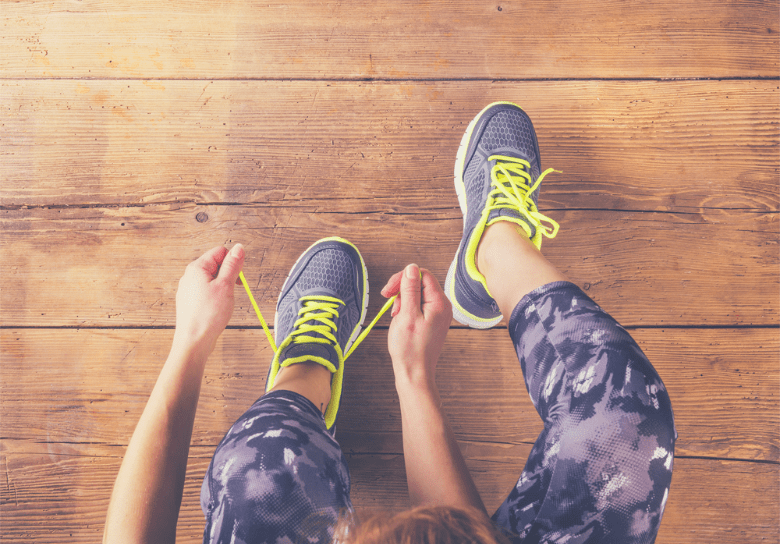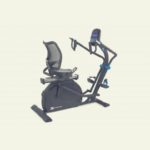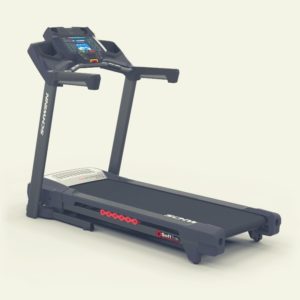Low-impact exercise is physical activity that is performed without lifting your feet off the ground or just one foot at a time; hence, putting less poundage on the joints, which makes it suitable for those with knee injuries to continue to workout while healing or for those who simply want a fitness regimen that helps preserve their musculoskeletal system.
However, with not as much hype put on low-impact exercise, especially when it comes to the latest fitness craze, it may cause you to wonder what are the benefits of low-impact exercise?
Low-impact exercise provides many benefits similar to traditional exercise, including helps improve cardiovascular health, which is good for the heart and blood vessels and protects against heart failure, heart disease, stroke, and more.
What are Some Other Benefits of Low-Impact Exercise?
Besides helping to keep your blood vessels and heart-healthy, which is vital to supply the body with oxygen and nutrients, low-impact exercise also provides a great way to gradually build strength and stamina but with less strain and risk of injury.
It also enables you to work out daily, if you’d like, as opposed to high-impact workouts whose strenuous activity typically requires a certain amount of downtime in between sessions to allow your muscles to recover and repair.
That being said, you can also work out longer with low-impact exercise since it doesn’t increase your heart rate too much, which can be dangerous, and there is also less chance of injury.
Some low-impact exercises, such as Pilates, yoga, and swimming, also help keep your muscles pliable, which improves mobility and helps prevent injuries from sports and everyday activities. And the more you practice, the more enhanced the benefits.
Lastly, as with any exercise, low-impact exercise also provides many mental health benefits, including helps decrease depression, anxiety, and stress, improves mood, increases energy, and more. It has also been shown to help improve memory and sleep.
Are Low-Impact Exercises Effective?
Both high-impact and low-impact exercise are shown to be safe and effective for increasing the heart rate, speeding the metabolism, burning calories and fat, and building muscle mass, thus helping to transform your body and your health.
However, because low-impact exercise exerts less pressure on the frame, it is shown to be more effective for those seeking a workout that is easier on the body, such as individuals who are new to exercise or who need to stay off a particular joint or muscle that is troublesome due to past surgery, injury, or arthritis.
Some low-impact exercises that focus on strength, balance, stretching, and alignment, such as yoga and Pilates, are also shown to improve stability and posture, which helps eliminate excess strain on the spine, muscles, and joints, thus helping to ease pain and prevent injury risks for greater confidence and productivity.
Low-impact exercise is also effective for keeping your body efficient and avoiding major medical issues as you mature.
In fact, according to one study, some effects of aging, including a loss in muscle mass, a decrease in heart rate, and excess weight gain around the midsection, typically begin as soon as age 25 and then gradually continues to take a toll on the body as you mature, thus eventually contributing to weakness, disability, and health issues in your older age.
However, this same study shows that it is possible to help stave off the effects of aging and continue to enjoy a quality life well into your later years with regular low-impact exercise.

Can Low-Impact Exercise Burn Fat?
Like high-impact exercise, low-impact exercise also enables your body to burn fat; however, it does so differently.
In fact, it actually enables you to burn even more fat than high-impact exercise because it utilizes mostly fat rather than carbohydrates as a fuel source, but it also means you burn fewer calories than with high-impact exercise.
Therefore, if you want to burn more calories with low-impact exercise, you will need to work out at a faster pace as well as for a longer duration to meet your goal.
However, with any exercise, you need to burn more calories than you take in to shed pounds, so be sure you also monitor your daily calorie intake in addition to remaining consistent with your exercise for the best results.
Can You Get Toned With Low-Impact Exercise?
Just as there are low-impact exercises that enable you to still receive the benefits of cardio but in a less strenuous way, there are also low-impact strength training exercises that enable you to build muscle without putting excess on the joints.
Experts add that it is also better long-term because all it takes is just 10 minutes each day to experience results, and since it’s low-impact, it can also be done when you’re older to maintain a healthy life.
Low-impact strength training exercises also help build your bones and improve bone density, which helps decrease the risk of developing osteoporosis, which is one of the main causes of bone fractures in sufferers.
What are Good Low-Impact Exercises?
What makes good low-impact exercises depends on your fitness goals as well as your physical state of health.
However, some good low-impact exercises in general, especially for beginners, include:
- Walking
- Hiking
- Chair Cardio
- Low-Impact Jumping Jacks
- Cycling
- Elliptical Machine
- Water Aerobics
Some good low-impact exercises for fat burning include:
- Swimming
- Cardio Kickboxing
- Rowing
- TRX Suspension Training
- Low-Impact Cardio Circuits
Some good low-impact exercises for strength training include:
- Yoga
- Pilates
- Dumbbell Chest Presses
- Dumbbell Frontal Raises
- Glute Bridges
- Hammer Curls
- Bicep Curls
- Bent Over Tricep Kickbacks
What Low-Impact Exercises Burn the Most Calories?
According to certified strength and conditioning coach Taylor Hynes, swimming, cycling, yoga, kettlebells, and rowing are the best low-impact exercises to blast calories.
However, as stated earlier, you can also work out at a faster pace to make your body burn more calories during low-impact exercise.
You can also burn more calories with low-impact exercise simply by involving more of your body in the workout to make it work harder. Some ways to do this include:
- Move your arms – during your workout to increase its overall intensity. For example, when walking, simply swing your arms by your side or raise them over your head to increase your heart rate and thus your calorie burn.Or, if you are exercising at a gym, choose machines that also enable you to work your arms, such as an elliptical trainer or cross ski machine, to help you work out harder.
- Really get your legs involved – because, since they contain the largest muscles in the body, exercising them makes your heart work harder to supply them with blood, thus, in turn, causing your body to burn more calories.Some ways to work your legs during low-impact exercise include squats, lunges, walking lunges, or side steps with squats.
- Overexaggerate your moves – such as while marching in place, to make your body work harder and intensify your workout.To do so, bring your knees up high, and instead of keeping your arms by your side, try circling them overhead instead to get your heart really pumping.
- Switch up your workout – with other low-impact activities, such as rowing, cycling, or swimming, so your body doesn’t get used to performing the same moves, which can eventually slow your results.
- Add short bursts of speed to your workout – also known as interval training, to help boost calorie burn. Or you could also alternate between low-impact exercises with varying degrees of challenge for a more intense fitness session.
What Low-Impact Exercises Burn the Most Belly Fat?
A flatter belly is more than just about looks. As it turns out, it also helps prevent various health issues, including high cholesterol, high blood pressure, high blood sugar, various heart diseases, and more.
Therefore, it is important to manage belly fat to help maintain your overall health, which can be done with a sensible diet that includes whole foods, such as grains, fruits, vegetables, and nuts, or you could incorporate fiber supplements, along with regular exercise.
Low-impact exercises, in particular, such as crunches, have been shown to help melt more belly fat. In fact, crunches rank as the most effective way to burn fat around the midsection.
They are also pretty basic to do. To perform crunches, place your body on the ground with your knees bent and your feet flat.
Next, place your hands behind your head, or you can cross them over your chest, and then lift your head toward your knees, using your core, to complete one crunch.
Not only does this exercise help melt belly fat, but it also includes the added perk of helping you build strong abs.
Some other low-impact exercises that help burn significant belly fat include:
- Walking
- Vertical Leg Exercises
- Aerobics
- Cycling
- Dancing
- Planks
- Mountain Climbers
- Russian Twists
- Medicine Ball Slams
- Chair Knee to Chest Lifts
- Chair Double Knee Lifts
Just remember, when doing low-impact exercises to get a flatter stomach, it is important to keep your spine lifted and your belly button tucked in to help protect your back and to benefit the most from the ab work.

Are There Any Precautions/Risks With Low-Impact Exercises?
Low-impact exercises are considered safe for most individuals. However, if you suffer from pain or injury, you should talk to your doctor before participating in exercise to see which ones are right for you.
If you are on medication, you should also consult with your physician to see if it is safe to exercise because some medications, such as antidepressants, muscle relaxants, opioid pain relievers, antihistamines, and more, can interfere with your workout.
Certain medical conditions, such as high blood pressure, can also make it unsafe to exercise, so if you have health concerns, you should also speak with your doctor to see if there are any restrictions on what workouts you can do.
If you are pregnant, you should also talk with your doctor before doing low-impact exercise to ensure you take the proper precautions during your workouts to avoid complications.
In the meantime, if during your workout, you become short of breath or you notice your heart is beating irregularly, slow down or rest.
However, if you feel pain or pressure in your jaw, shoulder, or neck, pain in your chest, dizziness, weakness, or lightheadedness, contact your doctor immediately if the symptoms do not subside or continue to occur because it can be a medical emergency.
Best Low Impact Exercise Equipment
| XTERRA Fitness RSX1500 | Teeter FreeStep LT3 Recumbent Cross Trainer | Sunny Health & Fitness SF-RB4708 |
 |
 |
 |
| The XTERRA Fitness RSX1500 seated stepper is one of the more comfortable low impact exercise equipment you can find with its mesh, back seating. | The Teeter FreeStep LT3 Recumbent Cross Trainer has a patented stride technology that reduces the impact on your lower joints significantly when compared to other low impact workout machines. | The Sunny Health & Fitness SF-RB4708 provides an affordable low impact exercise machine for those who aren’t quire ready to dish out the big bucks or are on a budget when shopping for low impact workout equipment for home use. |
 |
 |
 |
Final Thoughts
No matter your fitness level or goals, hopefully, this explanation of the benefits of low-impact exercise has left you viewing it in its true light.
And it doesn’t have to be used as your sole method of physical fitness, as it can also be incorporated in between high-impact workouts to allow your muscles to recuperate while still enabling you to keep busy.
Or you could also switch up your routines with low-impact exercise for further benefits, added variety, and a more challenging workout.
Meanwhile, if you suffer from an injury or joint issues, low-impact exercise can provide you with hope knowing you can still maintain your fitness as you recover.
Since it is easier on the body, it enables you to also enjoy it long-term to help manage your health and maintain your independence well into your senior years for sustained quality of life.
With all the benefits that low-impact exercise has to offer, why not start looking into it before your next workout?



